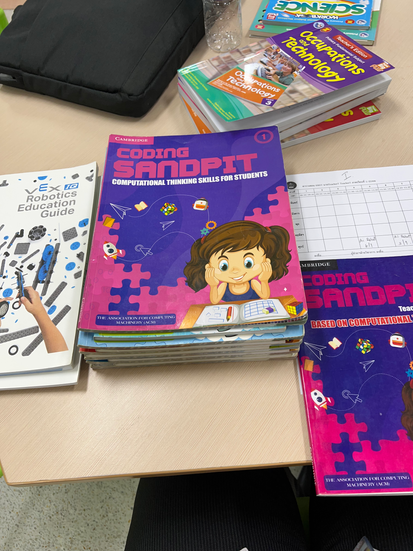Pedagogical Contents
- IVER BITOY
- Jul 6
- 3 min read
Updated: Jul 7
Intensive English Program and English Program in VRU
During our second day in Satit Elementary building I have experienced conducting classes in Intensive English Program (IEP) and the English Program (EP).


I had the opportunity to teach an IEP class for a day at Satit Elementary School in Valaya Alongkorn Rajabhat University (VRU), and it was both a challenging and eye-opening experience. The class had about 15 to 20 energetic students who were still in the process of developing their English proficiency. Communication was definitely a hurdle, as expressing instructions clearly required extra patience and creativity. Despite the language barrier, the students showed enthusiasm and a willingness to learn, which made the effort worthwhile. Even in just one day, I gained valuable insight into the demands and rewards of teaching in an IEP setting.


Teaching in the English Program (EP) at Satit Elementary School in VRU was a refreshing experience. The class was small, with fewer than 15 students, which made it easier to manage and connect with each learner. Unlike the IEP class, these students had stronger English skills, allowing for smoother communication and more engaging discussions. The smaler class size also gave room for more personalized teaching and interaction. It was a brief but meaningful glimpse into how effective language learning can be in a focused and supportive environment.
Teaching Methods of the Teacher that You Observed
Teachers use a range of teaching methods to support effective and engaging learning. The most common approach is student-centered learning, where activities are designed to promote participation, collaboration, and independent thinking. Active learning strategies such as group work, games, and hands-on experiments are widely used, especially in subjects like Science, English, and STEM. Teachers also apply differentiated instruction to meet the varying proficiency levels of students, particularly in the English Program and IEP classes. Additionally, blended learning is practiced, combining traditional classroom teaching with digital tools and online resources to enrich the learning experience.
Learning Materials and Innovation
Satit VRU (Valaya Alongkorn Rajabhat University Demonstration School) employs a diverse and well-rounded set of learning materials to support its English Program and broader curriculum.
Students in the English Program benefit from a modern and engaging curriculum that includes specialized learning materials like Coding Sandpit and AI for Robotics. The Coding Sandpit book, published by Cambridge University Press, is part of an 8-level series designed to build foundational computational thinking skills. Commonly used in elementary classrooms, particularly at Level 3, it introduces students to basic programming concepts such as algorithms, sequencing, and logical patterns through interactive and thematic activities. Meanwhile, for more advanced learners and educators, the school also references AI for Robotics: Toward Embodied and General Intelligence, a 2025 publication by Apress. This book explores robotics through the lens of artificial intelligence, covering topics like robot perception, reinforcement learning, and multimodal models. Together, these materials support a progressive learning path—from basic coding to the conceptual understanding of robotics and AI—making Satit VRU’s English Program both innovative and future-focused.
Sources of Learning and Technology Used by the Teachers
Teachers utilize a variety of learning sources and technologies to support student learning, especially in the English and Intensive English Programs. Core materials include textbooks, workbooks, and teacher-made resources such as worksheets, flashcards, and visual aids. To enhance lessons, teachers often incorporate multimedia content like videos, songs, and interactive games from platforms such as YouTube, Kahoot, and Quizizz. Classrooms are equipped with projectors or smart TVs, along with computers, printers, microphones, and stable internet access to support digital teaching. This blend of traditional and modern tools allows for engaging, student-centered lessons that cater to diverse learning needs.
Authentic Assessment Used by the Teachers
Teachers use a variety of authentic assessments to evaluate students’ real-world application of knowledge and skills. These include project-based tasks, group presentations, and role-playing activities that allow students to demonstrate understanding beyond written tests. Performance-based assessments, such as reading aloud, storytelling, and experiments in science, are also commonly used, especially in English and STEM subjects. Teachers often use rubrics to assess creativity, collaboration, and communication skills during these activities. This approach not only measures academic progress but also encourages active participation and practical learning.




















Comments